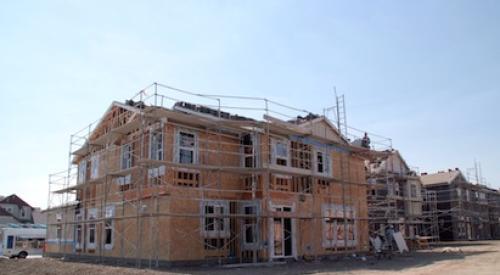For this issue Pat O’Toole, our venerable publisher, asked me to write about the best business models among those home builders in what is often termed the second tier of the industry, or those companies ranked in the top 25 to 100. These privately held builders do not qualify as the mostly public Giants and operate typically in a single market or a tightly defined regional area. They have a great deal of influence in their local arenas, in fact, more influence as a group than the publicly traded companies. Here is a little-known secret. If you get close to the suppliers and trades, most of them will tell you these private builders are their most coveted customers. Pat told me readers want to know, “What does the future look like?”
Easy assignment, I thought initially, but let’s get a couple of things out of the way up front. First, I hate even using the term second tier because there is nothing inferior about these builders beyond mere volume, and that is often by choice. I have had the unique privilege over the past 25 years of working with around 200 builders (counting divisions of larger ones) in most of the United States and five countries. That includes half of the U.S. top 20 and almost 40 percent of the top 100.
The unintentional result is that I have developed, with a few notable exceptions, a strong bias toward the smaller, privately held builders for a variety of reasons. They are almost always easier to work with, more fun, quicker to innovate, faster to implement, and they pay you on time. The strong local builders in most markets meet and often beat the top 20 in quality, customer satisfaction, and consistently make more money than the publics. Why is that? What do they do differently? Pat’s question turns out to be a challenging one on many fronts.
Bigger not always better
Before I entered homebuilding full time a quarter of a century ago, I had stints with U.S. Steel and Motorola and worked at two different consulting firms with primarily Fortune 100 clients. That and an MBA can almost get a guy believing that big business is where it’s at and that the world revolves around the captains of industry, as they would have us believe. Sure, they dominate the news. What pundit is going to call Top Homes in Topeka when he can get a quote from SuperBuilder Inc., with 20 locations in 15 states? Yet I quickly learned that smaller organizations unencumbered by internal politics, gamesmanship, and bureaucracy have a few legs up on the big guys. Perhaps the most significant advantage held by the locals—whatever their chosen business model—is speed of decision-making. Speed means faster response to opportunities, needs, and market changes. But back to Pat’s inquiry about who has the best model. The longer I pondered this question, the less definitive I became. Exactly what constitutes a best model?
One could argue that anyone who was building during 2007 and is still out there today in 2013 must have a successful model. They survived the perfect storm of Wall Street misconduct, government largess, and mortgage industry malfeasance. Has any other industry in the modern world ever dropped 80 percent in sales? Living in the Detroit area, I have many auto industry friends who took it on the chin pretty hard during those same years and cried, “Why us?” Yet in their worst year they were down only 39 percent, less than half the decline in home building. They had it easy. Our current housing recovery feels good but resembles a proverbial dead-cat bounce compared to the current automotive market, which is hot, indeed. So if you are even here today building homes, my hat is off to you. There still lies the problem, however, of describing the best business model. In the past I have read about so many models contending to be the best, but those claims didn’t stand up to scrutiny.
For example, you will often hear, “Choose your market wisely.” My home state of Michigan is improving at a surprisingly rapid pace, but it was one of the hardest hit during the recession. Yet Allen Edwin Homes near Kalamazoo, Eastbrook Homes in Grand Rapids, Mayberry Homes in Lansing, and Lombardo Homes in the Detroit area have not just survived but prospered, and all with very different business models.
Pick your axiom
You probably read about the wisdom of selecting the right product to build. Would that be the luxurious move-up product from Signature Homes in Birmingham, Ala., which remarkably increased its market share 10-fold during the recession, or would the better decision be the mostly entry-level product of DSLD in Denham Springs, La., which profitably grew from zero to 1,200 starts during that same recession? We can account for that disparity because those builders matched product to what the market wanted, right? So was Craig Stevens of Stevens Fine Homes in Wilmington, N.C., just lucky when he defied tradition and what everyone said the customer wanted and instead brought a two-story product to his market? Buyers went after those units like trout on mayflies. Do your market research. Yes, there can be great value there, but some days market research seems to be a strange mishmash of science, intuition, and self-fulfilling prophecy. I recall well the lament from Dr. W. Edwards Deming, “No customer ever knew she wanted a microwave oven!” So how did Craig know she wanted a two-story house?
Knowing what you build well and “sticking to your knitting” is time-honored advice. But I know two builders who were forced by the recession to go far astray. Memphis home builder Vintage Homes was the strongest builder of move-up housing in town. When the market collapsed, Vintage completely reinvented itself and its product line by building low-priced, entry-level housing for which more than 50 percent of their closings require some level of credit repair. Credit repair soon became its own department at Vintage and was essential for survival. Bigelow Homes prospered for decades in Chicago, pioneering concepts of energy efficiency and traditional neighborhood development long before they became popular elsewhere. When Chicago tanked in epic fashion, Bigelow did not go under, unlike a huge percentage of builders. Instead, it pulled up stakes and started over with just a few people in San Marcos, Texas. Bigelow will build 100 units in 2013. The courage to stare reality in the face, move 1,200 miles to a virtually foreign land, and begin again is a remarkable achievement.
Less is more or is more better?
Having spent almost nine years with one of the largest nationals, I grew up in the business learning that you have to carefully pick and limit options—and never, ever allow a structural option. This point was confirmed to me by the results of an independent customer satisfaction survey in Indianapolis some years ago. Out of the top 10 builders, the company offering the fewest options finished first, while the builder offering the most options finished last. So that debate is settled. But wait, Grand Haven Homes in Austin, Texas, a fast-growing firm, established a clear niche for itself by offering virtually anything a customer wants. Then how about Granite Ridge Builders, the biggest 400-unit builder you’ve never heard of from Ft. Wayne, Ind. Yes, that Fort Wayne, the economic hotspot of America. A couple of weeks ago, founder Tony Reincke took me on a high-energy, 90-minute tour through his 10,000-square-foot showroom. When we finished, I needed a drink, a nap, and wanted to buy a new home in Fort Wayne. Granite Ridge, along with other wildly successful builders such as Jagoe Homes in Owensboro, Ky., Betenbough Homes in Lubbock, Texas, and Arkansas-based Rausch-Coleman also throw a wrench into the oft-preached model that to be successful builders must stay out of the so-called tertiary markets.
One thing we can say for sure, however, is avoid the build-on-your-lot concept. There is a long list of builders, many quite successful in production building, who failed trying to conquer that quagmire. But hold on. There’s Tilson in Texas, Cretin in Louisiana, and both Schumacher and Wayne based in Ohio building successfully across many states. We can play the same game with franchising where more have failed than have succeeded. However, Epcon, Red Door, and the venerable Arthur Rutenberg Homes, to name a few, are thriviing in that arena. I do know, however, that you cannot build volume successfully without building two per month and preferably three per month, per community. Right? Try telling that to Keystone Custom Homes, a production builder who will build over 300 homes in more than 40 communities this year from their base in Lancaster, Pa.
The great business model debate
I could keep debating with myself about the best elements of a homebuilding model for quite a while. Do you buy lots or develop your own land? Do you centralize scheduling or drive it from the field? Do you stick with your local banks or go in search of private equity? By now I hope you see the lesson in this. For every element in a business model you show me that works, I will show you one that does not. For every one you show me that fails, I will point out one that has succeeded. There is thus only one conclusion. A business model and its elements do not ultimately determine a builder’s success.
As a red-blooded, American-educated holder of an MBA, that statement violates my sensibilities. I want to be able to list the specific elements of the successful model, quantify it, and make it predictive so I can say, “Do this my friends; do these 10, or 20, or 100 specific things, and you will succeed.” But that would be a lie. The magic, as it turns out, is not in the model. It is in the leadership and management. That is the one key variable that makes all the difference. Now your answer is simple. After all, have there not been literally hundreds of books published about what makes for good leaders and managers? Just go buy eight or 10 and thoroughly digest them. If you cannot stomach reading one more of those tomes, try Ecclesiastes, Proverbs, or even less traditional sources that discuss leadership subtly but in surprising depth such as Shakespeare’s “Henry VIII,” Machiavelli’s “The Prince,” St. Exupery’s “The Little Prince,” or Gibran’s “The Prophet.”
That’s all there is—management and leadership? Now I have set myself up, and I anticipate O’Toole’s email saying, “Not so fast, Sedam.” Since I blew so many holes in the business-model solution, now he’ll want the article on the management practices that make a difference. That is one assignment I almost wrote on multiple occasions, but always shied away from for something more practical like one of those 10-steps articles readers so love (and the magazines have data to prove it). I will work on that. In the meantime, this is what I know. What makes the business model work, whichever archetype you choose, is a total commitment to that model from beginning to end, getting the details right, having the right people to implement it both internally and among suppliers and trades, then fully supporting them every stop of the way. The great leaders and managers I know are never afraid to get their hands dirty, their brains overworked, or their bodies exhausted to make that happen.
Scott Sedam is president and founder of TrueNorth Development. His articles appear in Professional Builder and his Lean Building Blog appears on www.HousingZone.com. Sedam welcomes your feedback at scott@truen.com and encourages readers to join the LeanBuilding Group on www.Linkedin.com.













